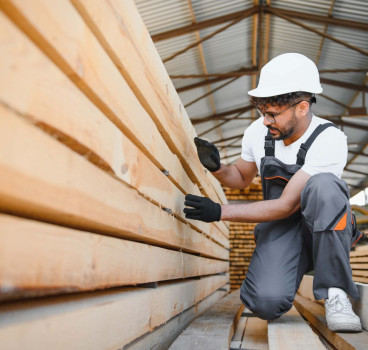Understanding construction site monitoring systems
The construction industry is experiencing a digital revolution and at the heart of this transformation is the fast-expanding monitoring system market. In recent years, it has experienced significant growth, expanding from $1.82 billion in 2023 to $2.11 billion in 2024, delivering a compound annual growth rate (CAGR) of 16.0%. This remarkable expansion reflects the increasing demand for improved safety, efficiency and real-time monitoring of construction projects – and it will play a critical role in shaping the future of the construction industry, writes John Ridgeway.
A construction site monitoring system is a combination of hardware and software tools used to manage and supervise activities at construction sites. These systems typically involve cameras, drones, sensors, artificial intelligence (AI), machine learning (ML) algorithms and cloud-based platforms, which is discussed later, in more detail. The primary purpose is to ensure operational efficiency, improve safety, minimise project delays and reduce risks on-site by enabling real-time data collection and communication.
The demand for these systems has surged in recent years due to various factors, most particularly, the need for real-time monitoring. Construction sites often face dynamic challenges and having a system in place that provides real-time data ensures that project managers can respond quickly to any issues.
With heightened emphasis on worker safety and stringent regulatory requirements, construction monitoring systems also help mitigate risks and ensure compliance with health and safety standards. By offering greater oversight and predictive analytics, these systems further help construction companies reduce project delays and cost overruns.
Why is this market important?
The construction industry is one of the most complex sectors, characterised by high-risk environments, multiple stakeholders and strict deadlines. Given the need for efficient project management and safety, construction site monitoring systems have therefore become essential for ensuring project success.
Construction sites are hazardous environments and as already mentioned, maintaining worker safety is a critical priority. Real-time monitoring systems provide live feeds and analytics, which can alert project managers to potential safety hazards, enabling them to take immediate corrective actions. This leads to a reduction in accidents, injuries, and fatalities, ensuring compliance with safety regulations.
Furthermore, in sectors like construction, where non-compliance with safety standards can lead to hefty fines, a reliable monitoring system becomes indispensable for maintaining a safe working environment.
Project delays, mismanagement of resources and unforeseen risks can also also lead to cost overruns. Construction site monitoring systems help mitigate these risks by offering real-time insights, enabling better decision-making and resource allocation. Predictive analytics powered by AI and ML help forecast potential issues and delays, allowing construction teams to optimise their schedules and workflows.
By minimising wastage and delays, these systems help companies stay within budget and ensure that projects are completed on time.

With the rise of remote working models, construction site monitoring systems further enable project managers and other stakeholders to oversee operations from anywhere in the world. This capability is especially important for large-scale projects spread across multiple sites. Drones and high-definition cameras can capture real-time footage and cloud-based platforms allow data to be accessible from anywhere, ensuring greater transparency and accountability across teams.
Key trends
The construction site monitoring system market has seen rapid advancements in recent years, with new technologies enhancing functionality and efficiency. Some of the key trends include artificial intelligence (AI) and machine learning (ML), which have transformed the way construction sites are monitored. AI can analyse video footage to detect potential safety hazards, while ML algorithms can predict equipment failures or supply shortages before they occur. These technologies also play a role in optimising labour productivity, as they can assess data to recommend more efficient workflows.
The use of drones has become more prevalent. Drones can survey large areas of a site quickly, providing detailed aerial views and capturing high-quality images that can be analysed for safety hazards, progress tracking and resource allocation. This technology allows for a more comprehensive view of the site, making it easier to identify issues that might not be visible from the ground.
The introduction of 5G technology is another major trend in the construction site monitoring system market. With ultra-fast data transmission speeds, 5G allows for real-time, high-resolution video streaming and quick access to large datasets. This technology enhances the ability to monitor sites remotely and improves communication between teams, even in the most challenging environments.
This is supported by cloud-based monitoring platforms, which are crucial for enabling real-time data access and storage. These platforms allow project managers to access data, videos, and reports from any location and device, streamlining communication and decision-making processes. As cloud storage becomes more secure and affordable, its adoption in construction site monitoring continues to grow.
Construction companies are also increasingly focusing on environmental sustainability. Monitoring systems are now equipped with tools to track emissions, energy consumption and waste levels. These systems help companies adhere to green building standards and implement eco-friendly practices that align with regulatory requirements and corporate social responsibility goals.
Growth drivers
All this is happening because of the ongoing urbanisation in many parts of the world, which has spurred a surge in construction projects. The need for residential, commercial, and industrial infrastructure has driven demand for construction site monitoring systems, as these tools ensure that large-scale projects are completed on time and within budget.
Governments around the world are also investing heavily in infrastructure development, which has created an increased demand for construction site monitoring systems. Infrastructure projects often involve multiple contractors, tight deadlines and strict safety regulations, making effective monitoring critical for successful project execution.
The Internet of Things (IoT) has further introduced smart devices and sensors to construction sites, enhancing the ability to monitor equipment, workers and site conditions in real-time. These devices can provide valuable data on temperature, humidity, vibrations and other factors that affect safety and project progress.
While the construction site monitoring system market is experiencing rapid growth, it is also facing several challenges. Data security remains a concern, particularly with the increasing use of cloud-based platforms and IoT devices. Ensuring that sensitive data is protected from cyber threats will be a priority for the industry moving forward.
Additionally, as technology continues to evolve, companies will need to invest in training and education to ensure that workers and managers can effectively use these systems. The integration of AI, ML, and other advanced technologies will require a skilled workforce capable of leveraging these tools to their full potential.
All this means that for construction companies, adopting these monitoring systems is no longer an option — it’s essential for staying competitive in a rapidly changing industry. As the market grows, so too will the opportunities for innovation, efficiency and improved safety standards, making the future of construction both promising and transformative.
Additional Blogs

What if Building Control went fully digital?
Building control governs structural integrity, fire protection, energy efficiency, accessibility and countless other aspects of design and construction. Historically, this process has been highly...
Read moreWhere most “Smart Buildings” go wrong
Smart buildings are often presented as the ultimate in modern construction - interconnected, efficient, intuitive and driven by real-time data. They promise lower operating costs, reduced energy use,...
Read more

The future of facilities management starts at RIBA Stage 0
Facilities management has traditionally been treated as a discipline that only becomes relevant once a building is handed over. At that point, FM professionals inherit decisions made months or years...
Read more